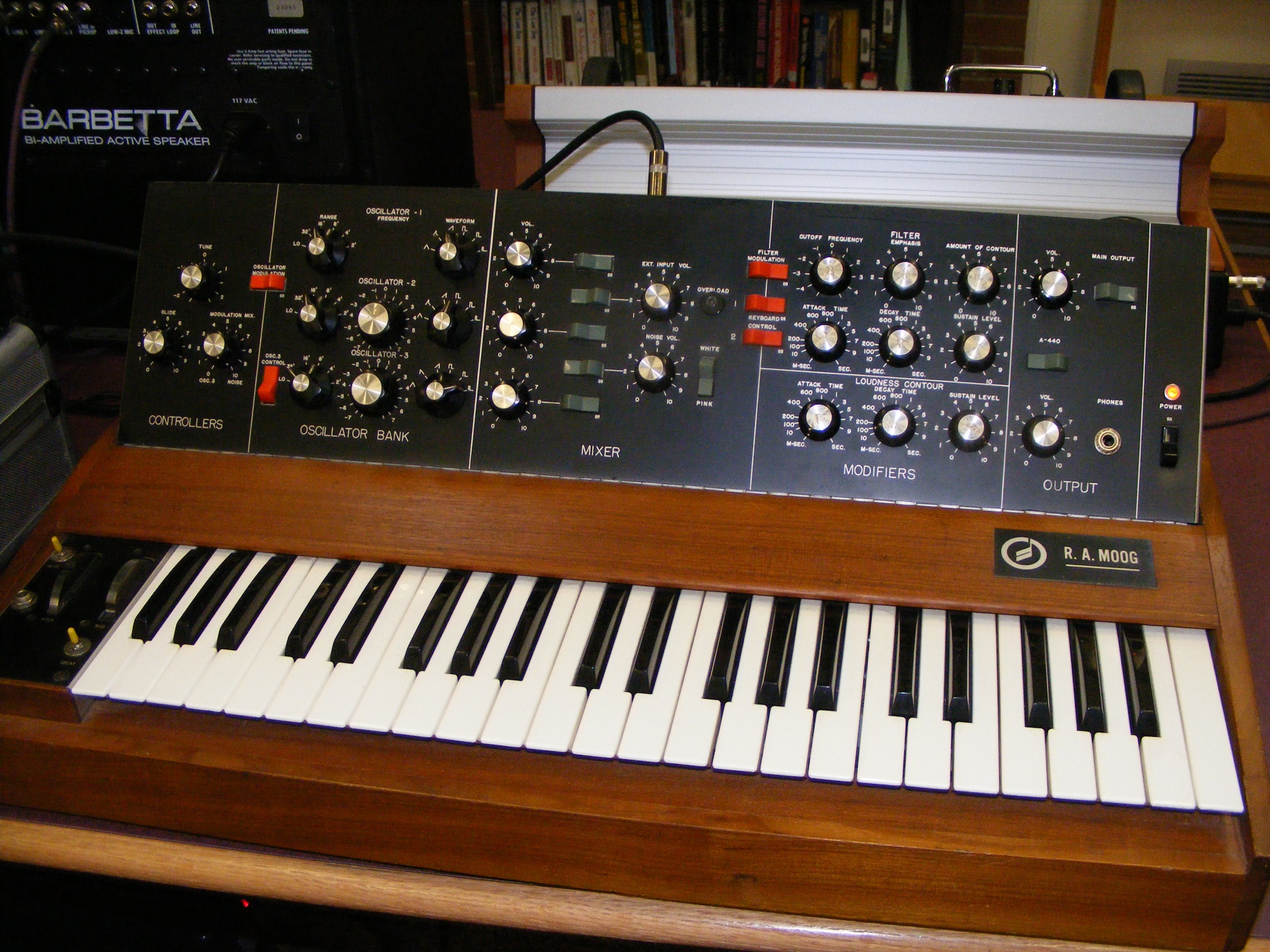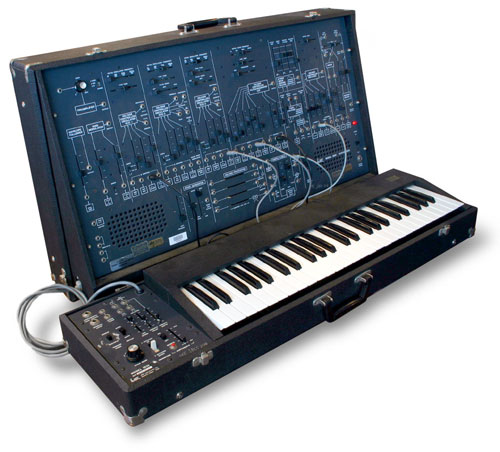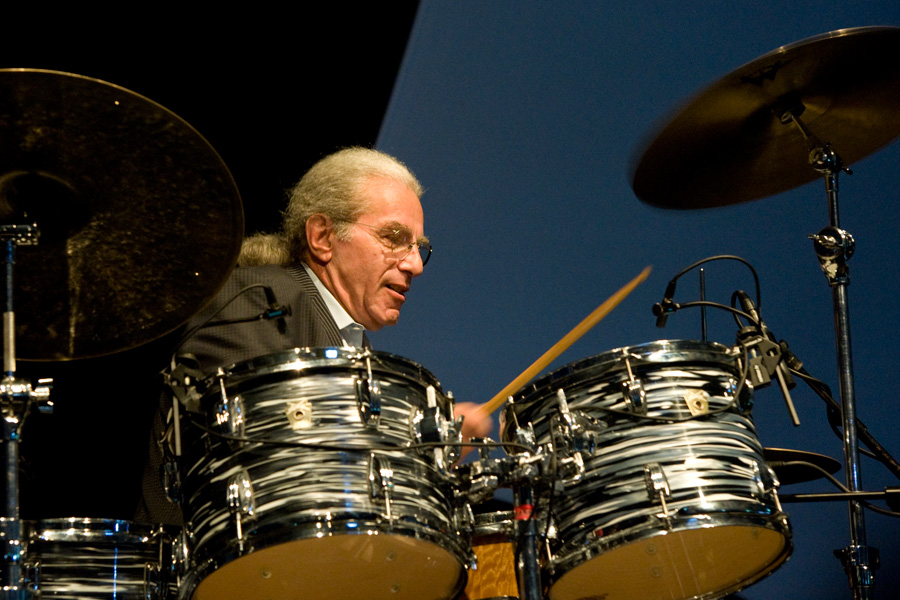|
Paul Bley
Paul Bley, Order of Canada, CM (November 10, 1932 – January 3, 2016) was a Canadian jazz pianist known for his contributions to the free jazz movement of the 1960s as well as his innovations and influence on trio playing and his early live performance on the Moog synthesizer, Moog and ARP Instruments, ARP synthesizers. His music has been described by Ben Ratliff of the ''New York Times'' as "deeply original and aesthetically aggressive". Bley's prolific output includes influential recordings from the 1950s through to his solo piano recordings of the 2000s. Early life Bley was born in Montreal, Quebec, on November 10, 1932. His adoptive parents were Betty Marcovitch, an immigrant from Romania, and Joseph Bley, owner of an embroidery factory, who named him Hyman Bley. However, in 1993 a relative from the New York branch of the Bley family walked into the Sweet Basil Jazz Club in New York City and informed Bley that his father was actually his biological parent. At age five Bley b ... [...More Info...] [...Related Items...] OR: [Wikipedia] [Google] [Baidu] |
Montreal
Montreal is the List of towns in Quebec, largest city in the Provinces and territories of Canada, province of Quebec, the List of the largest municipalities in Canada by population, second-largest in Canada, and the List of North American cities by population, ninth-largest in North America. It was founded in 1642 as ''Fort Ville-Marie, Ville-Marie'', or "City of Mary", and is now named after Mount Royal, the triple-peaked mountain around which the early settlement was built. The city is centred on the Island of Montreal and a few, much smaller, peripheral islands, the largest of which is Île Bizard. The city is east of the national capital, Ottawa, and southwest of the provincial capital, Quebec City. the city had a population of 1,762,949, and a Census geographic units of Canada#Census metropolitan areas, metropolitan population of 4,291,732, making it the List of census metropolitan areas and agglomerations in Canada, second-largest metropolitan area in Canada. French l ... [...More Info...] [...Related Items...] OR: [Wikipedia] [Google] [Baidu] |
Charles Mingus
Charles Mingus Jr. (April 22, 1922 – January 5, 1979) was an American jazz Double bass, upright bassist, composer, bandleader, pianist, and author. A major proponent of collective Musical improvisation, improvisation, he is considered one of the greatest jazz musicians and composers in history,See the 1998 documentary ''Triumph of the Underdog'' with a career spanning three decades and collaborations with other jazz greats such as Duke Ellington, Charlie Parker, Max Roach, and Eric Dolphy. Mingus's work ranged from advanced bebop and avant-garde jazz with small and midsize jazz ensemble, ensembles to pioneering the post-bop style on seminal recordings like ''Pithecanthropus Erectus (album), Pithecanthropus Erectus'' (1956) and ''Mingus Ah Um'' (1959) and progressive big band experiments such as ''The Black Saint and the Sinner Lady'' (1963). Mingus's compositions continue to be played by contemporary musicians ranging from the repertory bands Mingus Big Band, Mingus Dynasty (b ... [...More Info...] [...Related Items...] OR: [Wikipedia] [Google] [Baidu] |
Synthesizer
A synthesizer (also synthesiser or synth) is an electronic musical instrument that generates audio signals. Synthesizers typically create sounds by generating waveforms through methods including subtractive synthesis, additive synthesis and frequency modulation synthesis. These sounds may be altered by components such as filters, which cut or boost frequencies; envelopes, which control articulation, or how notes begin and end; and low-frequency oscillators, which modulate parameters such as pitch, volume, or filter characteristics affecting timbre. Synthesizers are typically played with keyboards or controlled by sequencers, software or other instruments, and may be synchronized to other equipment via MIDI. Synthesizer-like instruments emerged in the United States in the mid-20th century with instruments such as the RCA Mark II, which was controlled with punch cards and used hundreds of vacuum tubes. The Moog synthesizer, developed by Robert Moog and first so ... [...More Info...] [...Related Items...] OR: [Wikipedia] [Google] [Baidu] |
ARP Instruments
ARP Instruments, Inc. was a Lexington, Massachusetts manufacturer of electronic musical instruments, founded by Alan Robert Pearlman in 1969. It created a popular and commercially successful range of synthesizers throughout the 1970s before declaring bankruptcy in 1981. The company earned a reputation for producing excellent sounding, innovative instruments and was granted several patents for the technology it developed. History Background Alan Pearlman was an engineering student at Worcester Polytechnic Institute, Massachusetts in 1948 when he foresaw the coming age of electronic music and synthesizers. He later wrote "The electronic instrument's value is chiefly as a novelty. With greater attention on the part of the engineer to the needs of the musician, the day may not be too remote when the electronic instrument may take its place ... as a versatile, powerful, and expressive instrument." Beginnings Following 21 years of experience in electronic engineering and ent ... [...More Info...] [...Related Items...] OR: [Wikipedia] [Google] [Baidu] |
Moog Synthesizer
The Moog synthesizer ( ) is a modular synthesizer invented by the American engineer Robert Moog in 1964. Moog's company, R. A. Moog Co., produced numerous models from 1965 to 1981, and again from 2014. It was the first commercial synthesizer and established the analog synthesizer concept. The Moog synthesizer consists of separate modules which create and shape sounds, which are connected via patch cords. Modules include voltage-controlled oscillators, amplifiers, filters, envelope generators, noise generators, ring modulators, triggers and mixers. The synthesizer can be played using controllers including keyboards, joysticks, pedals and ribbon controllers, or controlled with sequencers. Its oscillators produce waveforms, which can be modulated and filtered to shape their sounds ( subtractive synthesis) or used to control other modules ( low-frequency oscillation). Moog developed the synthesizer in response to demand for more practical and affordable electronic music ... [...More Info...] [...Related Items...] OR: [Wikipedia] [Google] [Baidu] |
Order Of Canada
The Order of Canada () is a Canadian state order, national order and the second-highest Award, honour for merit in the system of orders, decorations, and medals of Canada, after the Order of Merit. To coincide with the Canadian Centennial, centennial of Canadian Confederation, the three-tiered order was established in 1967 as a fellowship recognizing the outstanding merit or distinguished service of Canadians who make a major difference to Canada through lifelong contributions in every field of endeavour, as well as efforts by non-Canadians who have made the world better by their actions. Membership is accorded to those who exemplify the order's Latin motto, , meaning "they desire a better country", a phrase taken from Hebrews 11:16. The three tiers of the order are Companion, Officer and Member. Specific people may be given extraordinary membership and deserving non-Canadians may receive honorary appointment into each grade. , the reigning Canadian monarch, is the order's sov ... [...More Info...] [...Related Items...] OR: [Wikipedia] [Google] [Baidu] |
Steve Lacy (saxophonist)
Steve Lacy (born Steven Norman Lackritz; July 23, 1934 – June 4, 2004) was an American jazz saxophonist and composer recognized as one of the important players of soprano saxophone. Coming to prominence in the 1950s as a Dixieland, progressive dixieland musician, Lacy went on to a long and prolific career. He worked extensively in experimental jazz and to a lesser extent in free improvisation, but Lacy's music was typically melodic and tightly-structured. Lacy also became a highly distinctive composer, with compositions often built out of little more than a single questioning phrase, repeated several times. The music of Thelonious Monk became a permanent part of Lacy's repertoire after a stint in the pianist's band, with Monk's works appearing on virtually every Lacy album and concert program; Lacy often partnered with trombonist Roswell Rudd in exploring Monk's work. Beyond Monk, Lacy performed the work of jazz composers such as Charles Mingus, Duke Ellington and Herbie Nicho ... [...More Info...] [...Related Items...] OR: [Wikipedia] [Google] [Baidu] |
Coleman Hawkins
Coleman Randolph Hawkins (November 21, 1904 – May 19, 1969), nicknamed "Hawk" and sometimes "Bean", was an American jazz tenor saxophonist.Yanow, Scot"Coleman Hawkins: Artist Biography" AllMusic. Retrieved December 27, 2013. One of the first prominent jazz musicians on his instrument, as Joachim-Ernst Berendt, Joachim E. Berendt explained: "There were some tenor players before him, but the instrument was not an acknowledged jazz horn". Hawkins biographer John Chilton described the prevalent styles of tenor saxophone solos prior to Hawkins as "mooing" and "rubbery belches". Hawkins denied being first and noted his contemporaries Happy Caldwell, Stump Evans, and Prince Robinson, although he was the first to tailor his method of Jazz improvisation, improvisation to the saxophone rather than imitate the techniques of the clarinet. Hawkins' virtuosic, arpeggiated approach to improvisation, with his characteristic rich, emotional, and vibrato-laden tonal style, was the main influen ... [...More Info...] [...Related Items...] OR: [Wikipedia] [Google] [Baidu] |
John Abercrombie (guitarist)
John Laird Abercrombie (December 16, 1944 – August 22, 2017) was an American jazz guitarist. His work explored jazz fusion, free jazz, and avant-garde jazz. Abercrombie studied at Berklee College of Music in Boston, Massachusetts. He was known for his understated style and his work with organ trios. Career Early life and education John Abercrombie was born on December 16, 1944, in Port Chester, New York. Growing up in the 1950s in Greenwich, Connecticut he was attracted to the rock and roll of Chuck Berry, Elvis Presley, Fats Domino, and Bill Haley and the Comets. He also liked the sound of jazz guitarist Mickey Baker of the vocal duo Mickey and Silvia. He had two friends who were musicians with a large jazz collection. They played him albums by Dave Brubeck and Miles Davis. The first jazz guitar album he heard was by Barney Kessel. He took guitar lessons at the age of ten, asking his teacher to show him what Barney Kessel was playing. After high school, he attended ... [...More Info...] [...Related Items...] OR: [Wikipedia] [Google] [Baidu] |
Pat Metheny
Patrick Bruce Metheny ( ; born August 12, 1954) is an American jazz guitarist and composer. He was the leader of the Pat Metheny Group (1977–2010) and continues to work in various small-combo, duet, and solo settings, as well as other side projects. His style incorporates elements of progressive and contemporary jazz, latin jazz, and jazz fusion. He has three gold albums and 20 Grammy Awards, and is the only person to have won Grammys in 10 categories. Biography Early years and education Metheny was born in Lee's Summit, Missouri, Lee's Summit, Missouri. His father Dave played trumpet, his mother Lois sang, and his maternal grandfather Delmar was a professional trumpeter. Metheny's first instrument was the trumpet, which he was taught by his brother, Mike Metheny, Mike. Pat's brother, father, and grandfather played trios together at home. His parents were fans of Glenn Miller and swing music. They took Pat to concerts to hear Clark Terry and Doc Severinsen, but they had little ... [...More Info...] [...Related Items...] OR: [Wikipedia] [Google] [Baidu] |
Jaco Pastorius
John Francis Anthony Pastorius III, also known as Jaco Pastorius (; December 1, 1951 – September 21, 1987), was an American jazz bassist, composer, and producer. Widely regarded as one of the greatest and most influential bassists of all time, Pastorius recorded albums as a solo artist, band leader, and as a member of the jazz fusion group Weather Report from 1976 to 1981. He also collaborated with numerous artists, including Herbie Hancock, Pat Metheny and Joni Mitchell. His bass style was influenced by funk and employed the use of Fretless bass guitar, fretless bass, lyrical solos, bass Chord (music), chords and innovative use of harmonics. As of 2017, he was the only one of seven bassists inducted into the ''DownBeat'' Jazz Hall of Fame to have been known for their work on the electric bass, and he has been lauded as among the best bassists of all time. Pastorius suffered from Addiction, drug addiction and mental health issues and, despite his widespread acclaim, over the ... [...More Info...] [...Related Items...] OR: [Wikipedia] [Google] [Baidu] |
Barry Altschul
Barry Altschul (born January 6, 1943, in New York City) is a free jazz and hard bop drummer who first came to notice in the late 1960s for performing with pianists Paul Bley and Chick Corea. Biography Altschul is of Russian Jewish heritage, the son of a laborer who did construction work and drove a taxi. Having initially taught himself to play drums, Altschul studied with Charlie Persip during the 1960s. In the latter part of the decade, he performed with Paul Bley. In 1969 he joined with Chick Corea, Dave Holland and Anthony Braxton to form the group Circle. At the time, he made use of a high-pitched Gretsch kit with add-on drums and percussion instruments. In the 1970s, Altschul worked extensively with Anthony Braxton's quartet featuring Kenny Wheeler, Dave Holland, and George E. Lewis. Braxton, signed to Arista Records, was able to secure a large enough budget to tour with a collection of dozens of percussion instruments, strings and winds. In addition to his partici ... [...More Info...] [...Related Items...] OR: [Wikipedia] [Google] [Baidu] |








